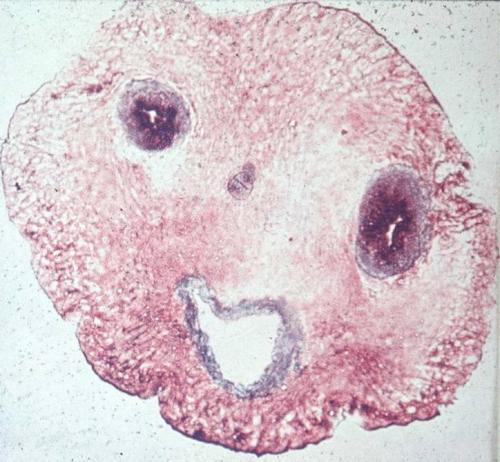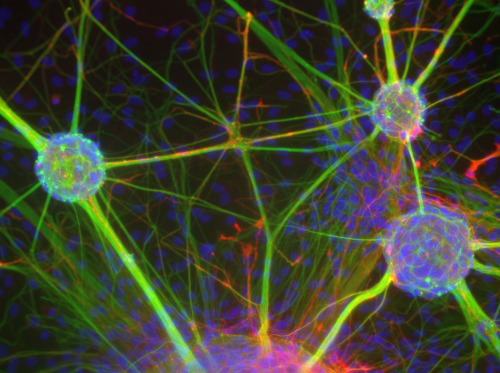Очень интересная информация с http://www.eurekalert.org/pub_releases/2009-11/eu-moo111309.php
Marker of oxidative stress predicts heart disease outcomes
Judging from the number of juices and teas advertised as containing antioxidants, consumers are aware of the dangers of oxidative stress. But what is the best way to measure it – and fight it?
Doctors at Emory University School of Medicine have identified a substance in the blood that may be useful in predicting an individual's risk for heart disease. The substance is cystine, an oxidized form of the amino acid cysteine and an indirect measure of oxidative stress.
In a study of more than 1,200 people undergoing cardiac imaging at Emory because of suspected heart disease, people with high levels of cystine in the blood were twice as likely to have a heart attack or die over the next few years.
Riyaz Patel, MD, a postdoctoral researcher at Emory's Cardiovascular Research Group, is presenting the results Monday at the American Heart Association Scientific Sessions meeting in Orlando.
Patel was part of a team led by Arshed Quyyumi, MD, professor of medicine (cardiology) at Emory University School of Medicine.
When considered independently of variables such as the presence of diabetes, high levels of cystine still predicted future trouble, Patel says. In the current research, high levels means the quarter of the group of patients with the highest levels.
"Cystine could be a valuable marker of cardiovascular risk, but it also has a direct harmful effect on cells, so reducing it may be a valuable treatment strategy," he says. "What's exciting is there are already known ways to intervene and drive down cystine levels in patients."
For example, a previous study has shown that supplementing the diet with zinc can lower cystine levels, he says.
Several studies have shown that levels of oxidized cysteine in the blood tend to rise as people age. Smoking and alcohol consumption are also linked with higher levels of oxidized cysteine.
Cysteine is itself a short-lived precursor to glutathione, one of the main antioxidants found inside cells, says Dean P. Jones, PhD, professor of medicine and director of the Clinical Biomarkers Laboratory at Emory University School of Medicine.
"We need to have a continuous supply of cysteine, but it is too reactive for us to have very much at any one time," he says. "We are not sure why the oxidized form of cysteine accumulates with aging and disease. But our studies show that when it accumulates, it activates inflammation in cells."
Jones and his colleagues have shown that when white blood cells are exposed to high levels of cystine, they display signs of inflammation and become stickier. That makes them more likely to adhere to blood vessels in the heart, an event that contributes to the development of heart disease.
The team has found that levels of cystine do not correlate with C-reactive protein, a blood marker of inflammation other scientists have studied for a possible relationship with heart disease. The team's future plans include comparing cystine to other markers of inflammation and understanding the relationships between them.
###
More about cysteine and oxidative stress:
http://whsc.emory.edu/home/news/releases/2009/03/targeting-oxidized-cysteine.html
http://whsc.emory.edu/home/publications/medicine/emory-medicine/summer2009/rejuggling-act.html
Reference:
Effects of long-term zinc supplementation on plasma thiol metabolites and redox status in patients with age-related macular degeneration.
SE Moriarty-Craige, KN Ha, P. Sternberg, M. Lynn, S. Bressler, G. Gensler, D.P. Jones. Am J Ophthalmol. 143(2):206-211 (2007)
The Robert W. Woodruff Health Sciences Center of Emory University is an academic health science and service center focused on missions of teaching, research, health care and public service. Its components include the Emory University School of Medicine, Nell Hodgson Woodruff School of Nursing, and Rollins School of Public Health; Yerkes National Primate Research Center; Emory Winship Cancer Institute; and Emory Healthcare, the largest, most comprehensive health system in Georgia. Emory Healthcare includes: The Emory Clinic, Emory-Children's Center, Emory University Hospital, Emory University Hospital Midtown, Wesley Woods Center, and Emory University Orthopaedics & Spine Hospital. The Woodruff Health Sciences Center has $2.3 billion in operating expenses, 18,000 employees, 2,500 full-time and 1,500 affiliated faculty, 4,500 students and trainees, and a $5.7 billion economic impact on metro Atlanta.
Learn more about Emory's health sciences: http://emoryhealthblog.com - @emoryhealthsci (Twitter) - http://emoryhealthsciences.org
17.11.2009
Об окислительном стрессе, маркерах и заболеваниях сердца
13.11.2009
Хм. О летальности смеси кокаин+перечный газ
Отличная статья на http://www.newscientist.com/article/mg20427345.300-cocaine-and-pepper-spray--a-lethal-mix.html?DCMP=OTC-rss&nsref=online-news:
DEATHS in US police custody during the early 1990s may have been the result of an interaction between capsaicin, the key ingredient in pepper sprays, and psychostimulant drugs, an experiment in mice suggests.
If the two have a fatal interaction in people then police forces might have to rethink their use of pepper spray as a non-lethal weapon, says John Mendelson of the Addiction and Pharmacology Research Laboratory at St Luke's Hospital in San Francisco, who led the mouse research.
In the early nineties, anecdotal reports emerged in the US of people dying after being sprayed by police. "They seemed to die very quickly," says Mendelson. At post-mortem, many of these people showed signs of having taken cocaine, so Mendelson wondered if capsaicin and cocaine could interact fatally in the body.
To investigate, his team injected cocaine, capsaicin or both at once into the abdomens of several groups of about 30 mice. Injections allowed them to control the dose of capsaicin the mice received, which wouldn't have been possible if the mice were simply sprayed, says Mendelson.
In one group of mice, cocaine was injected at a dose of 60 milligrams per kilogram of mouse weight, which killed just a few of them. But when the researchers injected a group with the same dose of cocaine plus capsaicin, the death toll was about half. "The presence of capsaicin in mice makes smaller amounts of cocaine more lethal," Mendelson says. When the team gave another group of mice capsaicin along with a higher dose of cocaine - enough to kill half of the mice on its own - the death toll rose to 90 per cent (Forensic Toxicology, DOI: 10.1007/s11419-009-0079-9). "We don't actually know how capsaicin reacts with cocaine to produce a lethal effect," admits Mendelson.
However, his team also reviewed 26 autopsy reports and Californian police reports between 1993 and 1995 of people who died shortly after being subdued with pepper spray. They noted that 19 of them had evidence of psychostimulants in their blood and nine had cocaine. Mendelson suspects that a fatal interaction takes place in the brain between capsaicin and psychostimulants.
Toxicologists are intrigued, but say further evidence is needed. "In real-life situations, humans inhale pepper spray, whereas these mice had the substance injected directly into their abdominal cavities," says Andy Smith of the Medical Research Council in Cambridge, UK. Kathryn Cunningham of the Department of Pharmacology and Toxicology at the University of Texas in Galveston says we don't know how much of the capsaicin that is sprayed in someone's face makes it into their bloodstream.
Peter Bibring, an attorney at the American Civil Liberties Union in Los Angeles, says the study adds weight to the ACLU's concern that pepper spray could be fatal. "Police departments need to make adjustments to minimise the chance it will be used on those under the influence of cocaine."
Norm Leong, a sergeant at the Sacramento Police Department in California says this could be a tough call: "It's impossible to know if someone is under the influence of cocaine, some other drug", has mental issues, or is just resisting arrest.
Об ожидании наслаждения и допамине
Читаем на http://www.scientificblogging.com/news_articles/link_between_dopamine_and_expectation_pleasure_confirmed
Enhancing the effects of dopamine influences how people make life choices by affecting expectations of pleasure, according to new research from the UCL Institute of Neurology.
Published today in Current Biology, the study confirms an important role for dopamine in how human expectations are formed and how people make complex decisions. It also contributes to an understanding of how pleasure expectation can go awry, for example in drug addiction.
The study builds on earlier research which used brain imaging as participants imagined holiday destinations. An area of the brain called the straitum tracked expectations and the
scientists found that they could take that signal and predict what the participants would choose. The authors believed this was dopamine at work and set-up this study to further explore its role.
The research team examined estimated pleasure of future events before and after the administration of a drug called L-DOPA which is known to enhance dopamine function in the brain and is commonly used to treat patients with Parkinson's disease.
The 61 study participants were asked to rate their expectations of happiness if they were to holiday at each of 80 destinations, from Thailand to Greece. They were then given L-DOPA or a placebo and asked to imagine holidaying in those destinations.
The following day participants had to pick between a series of paired destinations that they had initially assigned with equal ratings, one member of the pair was imagined under L-DOPA the day before and the other under placebo. Finally, they rated the full set of 80 destinations again.
Ratings for particular destinations increased after they were imagined under L-DOPA's influence. That increase also affected the participants' selections the following day. Dr Sharot added: "We had reason to believe that dopamine would enhance expectations of pleasure in humans, but were surprised at the strength of this effect. The enhancement lasted at least 24 hours and was evident in almost 80 per cent of the subjects."
Citation: Tali Sharot, Tamara Shiner,Annemarie C. Brown, Judy Fan,Raymond J. Dolan, 'Dopamine Enhances Expectation of Pleasure in Humans', Current Biology Online 2009, doi:10.1016/j.cub.2009.10.025
Ген, ответственный за биполярное расстройство
О своём, о маниакально-депрессивном... На http://www.scientificblogging.com/news_articles/faulty_rorb_genes_may_explain_bipolar_disorder_children
A team of researchers said this week that they may have identified the genes responsible for bipolar disorder in children. Their study, published in BMC Psychiatry, implicates malfunctioning circadian clock genes, four alterations of the RORB gene to be specific, in the development of the disorder.
Scientists studied the RORA and RORB genes of 152 children with Bipolar and 140 control children. They found four alterations to the RORB gene that were positively associated with being bipolar. "Our findings suggest that clock genes in general and RORB in particular may be important candidates for further investigation in the search for the molecular basis of bipolar disorder," explained co-author Alexander Niculescu.
RORB is mainly expressed in the eye, pineal gland and brain. Its expression is known to change as a function of circadian rhythm in some tissues, and mice without the gene exhibit circadian rhythm abnormalities.
According to Niculescu, "Bipolar disorder is often characterized by circadian rhythm abnormalities, and this is particularly true among pediatric bipolar patients. Decreased sleep has even been noted as one of the earliest symptoms discriminating children with bipolar disorder from those with attention deficit hyperactivity disorder (ADHD). It will be necessary to verify our association results in other independent samples, and to continue to study the relationship between RORB, other clock genes, and bipolar disorder".
Pediatric bipolar disorder is a controversial diagnosis characterized by alternating bouts of depression and mania in children, although it does not affect all young people in the same way and the duration and severity of the disorder can vary enormously.
Citation: Casey L McGrath, Stephen J Glatt, Pamela Sklar, Helen Le-Niculescu, Ronald Kuczenski, Alysa E Doyle, Joseph Biederman, Eric Mick, Stephen V Faraone, Alexander B Niculescu, Ming T Tsuang, 'Evidence for Genetic Association of RORB with Bipolar Disorder',
BMC Psychiatry 2009, doi:10.1186/1471-244X-9-70










